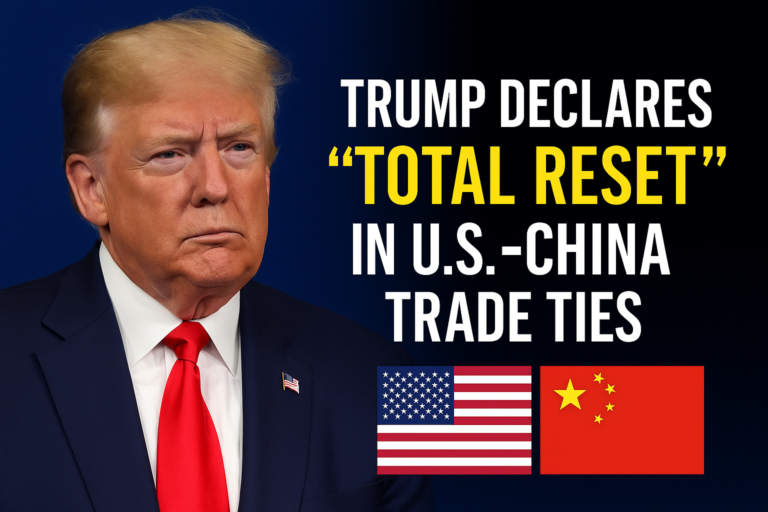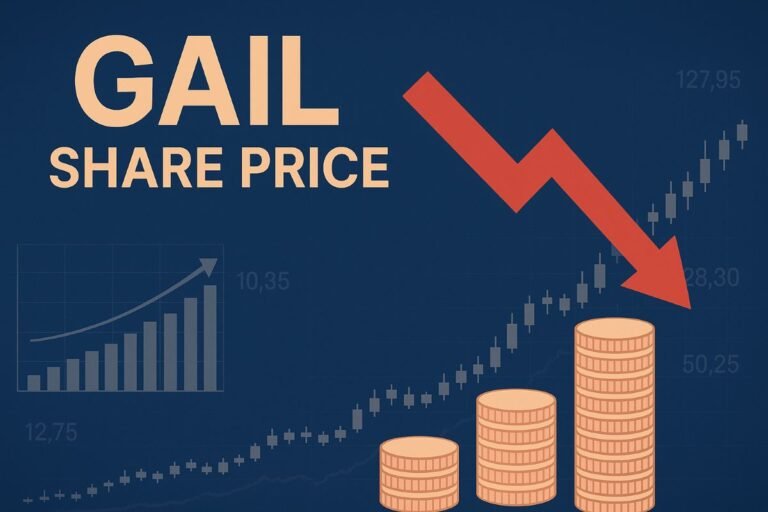Trump’s Tariff Pause Sparks Global Relief Rally: What It Means for the Indian Equity Market??
In an unexpected twist that breathed fresh life into global financial markets, U.S. President Donald Trump announced a 90-day suspension on newly imposed tariffs. The move, a dramatic pivot from days of economic tension, sent shockwaves through global stock exchanges, triggering a powerful relief rally. For Indian investors, this global shift sets an intriguing stage as domestic equity markets reopen on April 11 after a mid-week holiday.
Let’s unpack what this development means, particularly for the Indian stock markets and the broader investment landscape.
A Pause That Roared: Global Markets Rebound
After days of relentless sell-offs wiping out trillions from stock markets and sending U.S. Treasury yields surging, Trump’s announcement came as a surprising breather. The “Magnificent Seven” tech giants on Wall Street led the charge, collectively adding over $1.5 trillion in market capitalisation. The S&P 500 and Nasdaq posted their strongest single-day gains in over a decade, underscoring just how starved markets were for positive news.
Asian bourses followed suit. China’s CSI300 rose by 1.6%, and Hong Kong’s Hang Seng Index soared 3.3%, reflecting cautious optimism. Despite lingering concerns over the still-escalating U.S.-China trade tensions, investors momentarily embraced the relief.
This positive sentiment may well spill over into Indian markets when they reopen on April 11, with cues suggesting a gap-up opening in line with the global mood.
Indian Stock Markets: All Eyes on April 11 Opening
With Indian exchanges, namely the NSE and BSE, remaining closed on April 10 for Mahavir Jayanti, domestic investors had a front-row seat to observe the global relief rally without immediate exposure. As a result, April 11’s market open becomes a crucial pivot point, offering a chance to digest and react to the full spectrum of global news.
Here’s what to watch out for:
- Nifty 50 and Sensex could open higher, fueled by positive global sentiment and a potential rebound in risk appetite.
- Export-oriented sectors, especially IT and Pharma, may benefit from a slightly stronger dollar and easing trade tensions.
- Bond yields and inflation-sensitive stocks could still reflect underlying uncertainty if fears of sticky inflation and delayed rate cuts persist globally.
- The India VIX, a barometer of market volatility, may witness a dip initially if global cues hold, suggesting short-term calm.
While the market mood may be upbeat, savvy traders should remain vigilant—volatility hasn’t left the building just yet.
The Dollar’s Dance and the Rupee’s Response
Trump’s tariff pause briefly powered the U.S. dollar to notable highs, especially against the yen and Swiss franc. However, this surge was partially dialled back in Asian trade as traders weighed the longer-term implications of an unresolved U.S.-China spat.
Back home, the Indian Rupee (INR) could face dual forces: the dollar’s strength on one hand and a return of foreign portfolio investment (FPI) flows on the other. A stronger dollar typically pressures the rupee, but improving sentiment and a bounce in equities might attract overseas investors, cushioning the blow.
Currency traders may want to brace for a volatile INR/USD exchange rate in the near term as global uncertainties persist.
Commodity Markets: Mixed Bag Amid Trade Tensions
Commodities painted a more nuanced picture. While gold extended its climb, reflecting safe-haven demand amid ongoing geopolitical jitters, oil prices dipped, reflecting concerns over the macroeconomic impact of tariff wars.
For India, a gold price surge is usually a sign of investor caution. But for commodities-based businesses and sectors like oil & gas, falling crude prices may be a welcome relief.
Interestingly, although the commodity derivatives market was shut for the morning session on April 10, it opened for evening trade—giving Indian traders a taste of the international sentiment in real-time.
Beyond the Headlines: What Should Indian Investors Do?
As tempting as it is to chase Thursday’s global euphoria, Indian investors should balance optimism with pragmatism. While the 90-day pause is good news, it’s not an all-clear signal. Key tariffs on autos, aluminium, and steel still remain. And tensions between the U.S. and China appear far from resolved—with China retaliating by slapping additional duties and penalising 18 U.S. firms.
More importantly, the U.S. Federal Reserve is likely to maintain a cautious stance. Rate cuts that were once priced in are now being reassessed, with markets downgrading expectations from 100 bps to 80 bps by year-end.
Key strategies for Indian investors:
- Diversify portfolios across sectors and geographies to manage volatility.
- Track global macro cues and central bank decisions closely, especially those related to interest rates and inflation.
- Use stop-losses for short-term trades, given the unpredictable nature of global geopolitics.
Final Thoughts: Relief Rally or Just a Respite?
The tariff pause is undoubtedly a temporary boon for markets worldwide. But as the saying goes, “don’t confuse a bounce with a recovery.” For Indian markets, April 11 offers a golden chance to recalibrate. Will it be a gap-up rally driven by global positivity, or will cautious domestic cues temper the gains?
Whatever the case, one thing’s clear—investors need to stay alert, informed, and agile. The chessboard of international trade politics is shifting rapidly, and India’s equity markets, though resilient, are deeply interlinked with these global tremors.
Disclaimer: The views and investment insights provided here are based on publicly available information and do not constitute financial advice. Readers are advised to conduct their own research or consult certified financial experts before making investment decisions.






